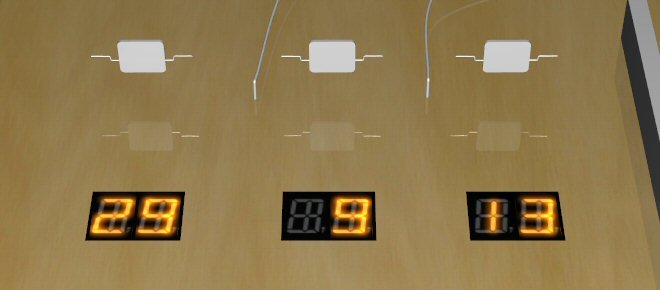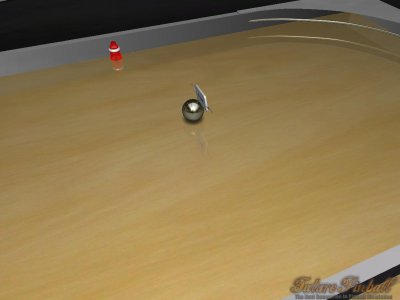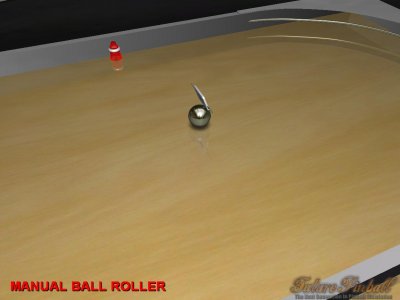Dim PO_1 : Set PO_1 = xBAM.FindObject(258.000, 534.000, 3)
Dim PO_2 : Set PO_2 = xBAM.FindObject(258.000, 0.000, 16)
Dim PO_3 : Set PO_3 = xBAM.FindObject(0.000, 534.000, 16)
Dim PO_4 : Set PO_4 = xBAM.FindObject(258.000, 1068.000, 16)
Dim PO_5 : Set PO_5 = xBAM.FindObject(516.000, 534.000, 16)
Dim PO_6 : Set PO_6 = xBAM.FindObject(258.000, 534.000, 11)
Dim PO_7 : Set PO_7 = xBAM.FindObject(22.000, 496.000, 28)
Dim PO_surface5 : Set PO_surface5 = xBAM.FindObject("surface5") ' //Dim PO_8 : Set PO_8 = xBAM.FindObject(258.000, 534.000, 12)
Dim PO_surface4 : Set PO_surface4 = xBAM.FindObject("surface4") ' //Dim PO_9 : Set PO_9 = xBAM.FindObject(258.000, 534.000, 12)
Dim PO_surface10 : Set PO_surface10 = xBAM.FindObject("surface10") ' //Dim PO_10 : Set PO_10 = xBAM.FindObject(258.000, 534.000, 12)
Dim PO_surface11 : Set PO_surface11 = xBAM.FindObject("surface11") ' //Dim PO_11 : Set PO_11 = xBAM.FindObject(258.000, 534.000, 12)
Dim PO_surface9 : Set PO_surface9 = xBAM.FindObject("surface9") ' //Dim PO_12 : Set PO_12 = xBAM.FindObject(258.000, 534.000, 12)
Dim PO_surface8 : Set PO_surface8 = xBAM.FindObject("surface8") ' //Dim PO_13 : Set PO_13 = xBAM.FindObject(258.000, 534.000, 12)
Dim PO_14 : Set PO_14 = xBAM.FindObject(358.480, 751.179, 28)
Dim PO_15 : Set PO_15 = xBAM.FindObject(258.000, 534.000, 27)
Dim PO_surface7 : Set PO_surface7 = xBAM.FindObject("surface7") ' //Dim PO_16 : Set PO_16 = xBAM.FindObject(258.000, 534.000, 12)
Dim PO_surface18 : Set PO_surface18 = xBAM.FindObject("surface18") ' //Dim PO_17 : Set PO_17 = xBAM.FindObject(258.000, 534.000, 12)
Dim PO_18 : Set PO_18 = xBAM.FindObject(106.520, 751.179, 28)
Dim PO_19 : Set PO_19 = xBAM.FindObject(115.957, 747.121, 27)
Dim PO_20 : Set PO_20 = xBAM.FindObject(376.000, 779.500, 20)
Dim PO_21 : Set PO_21 = xBAM.FindObject(124.222, 801.222, 20)
Dim PO_22 : Set PO_22 = xBAM.FindObject(89.000, 701.000, 20)
Dim PO_23 : Set PO_23 = xBAM.FindObject(258.000, 534.000, 7)
Dim PO_24 : Set PO_24 = xBAM.FindObject(483.000, 757.333, 16)
Dim PO_25 : Set PO_25 = xBAM.FindObject(258.000, 534.000, 4)
Dim PO_leftflipper : Set PO_leftflipper = xBAM.FindObject("leftflipper") ' //Dim PO_26 : Set PO_26 = xBAM.FindObject(258.000, 534.000, 24)
Dim PO_rightflipper : Set PO_rightflipper = xBAM.FindObject("rightflipper") ' //Dim PO_27 : Set PO_27 = xBAM.FindObject(258.000, 534.000, 24)
Dim PO_surface6 : Set PO_surface6 = xBAM.FindObject("surface6") ' //Dim PO_28 : Set PO_28 = xBAM.FindObject(258.000, 534.000, 12)
Dim PO_surface35 : Set PO_surface35 = xBAM.FindObject("surface35") ' //Dim PO_29 : Set PO_29 = xBAM.FindObject(258.000, 534.000, 12)
Dim PO_30 : Set PO_30 = xBAM.FindObject(376.500, 701.000, 20)
Dim PO_31 : Set PO_31 = xBAM.FindObject(340.714, 801.286, 20)
Dim PO_32 : Set PO_32 = xBAM.FindObject(89.000, 779.000, 20)
Dim PO_33 : Set PO_33 = xBAM.FindObject(376.500, 700.929, 20, 32.983)
Dim PO_34 : Set PO_34 = xBAM.FindObject(340.643, 801.214, 20, 32.983)
Dim PO_35 : Set PO_35 = xBAM.FindObject(124.214, 801.214, 20, 32.983)
Dim PO_36 : Set PO_36 = xBAM.FindObject(88.786, 700.929, 20, 32.983)
Dim PO_guide1 : Set PO_guide1 = xBAM.FindObject("guide1") ' //Dim PO_37 : Set PO_37 = xBAM.FindObject(258.000, 534.000, 20)
Dim PO_guide2 : Set PO_guide2 = xBAM.FindObject("guide2") ' //Dim PO_38 : Set PO_38 = xBAM.FindObject(258.000, 534.000, 20)
Dim PO_guide3 : Set PO_guide3 = xBAM.FindObject("guide3") ' //Dim PO_39 : Set PO_39 = xBAM.FindObject(258.000, 534.000, 20)
Dim PO_guide4 : Set PO_guide4 = xBAM.FindObject("guide4") ' //Dim PO_40 : Set PO_40 = xBAM.FindObject(258.000, 534.000, 20)
Dim PO_drain : Set PO_drain = xBAM.FindObject("drain") ' //Dim PO_41 : Set PO_41 = xBAM.FindObject(258.000, 534.000, 8)
Dim PO_42 : Set PO_42 = xBAM.FindObject(259.000, 1016.000, 4)
Dim PO_43 : Set PO_43 = xBAM.FindObject(259.000, 1016.000, 17)
Dim PO_plungerkicker : Set PO_plungerkicker = xBAM.FindObject("plungerkicker") ' //Dim PO_44 : Set PO_44 = xBAM.FindObject(258.000, 534.000, 8)
Dim PO_45 : Set PO_45 = xBAM.FindObject(441.250, 917.000, 4)
Dim PO_46 : Set PO_46 = xBAM.FindObject(441.250, 917.000, 17)
Dim PO_plungerlanegate : Set PO_plungerlanegate = xBAM.FindObject("plungerlanegate") ' //Dim PO_47 : Set PO_47 = xBAM.FindObject(258.000, 534.000, 5)
Dim PO_48 : Set PO_48 = xBAM.FindObject(258.000, 534.000, 1)
Dim PO_49 : Set PO_49 = xBAM.FindObject(485.000, 312.917, 6)
Dim PO_50 : Set PO_50 = xBAM.FindObject(483.000, 929.167, 13)
Dim PO_51 : Set PO_51 = xBAM.FindObject(89.000, 718.000, 20)
Dim PO_52 : Set PO_52 = xBAM.FindObject(109.000, 789.000, 20)
Dim PO_53 : Set PO_53 = xBAM.FindObject(376.000, 718.000, 20)
Dim PO_54 : Set PO_54 = xBAM.FindObject(356.000, 789.000, 20)
Dim PO_55 : Set PO_55 = xBAM.FindObject(258.000, 534.000, 21)
Dim PO_56 : Set PO_56 = xBAM.FindObject(9.480, 254.969, 12)
Dim PO_57 : Set PO_57 = xBAM.FindObject(506.282, 258.449, 12)
Dim PO_58 : Set PO_58 = xBAM.FindObject(257.871, 140.454, 12)
Dim PO_surface29 : Set PO_surface29 = xBAM.FindObject("surface29") ' //Dim PO_59 : Set PO_59 = xBAM.FindObject(258.000, 534.000, 20)
Dim PO_60 : Set PO_60 = xBAM.FindObject(404.000, 763.000, 13)
Dim PO_surface3 : Set PO_surface3 = xBAM.FindObject("surface3") ' //Dim PO_61 : Set PO_61 = xBAM.FindObject(258.000, 534.000, 12)
Dim PO_62 : Set PO_62 = xBAM.FindObject(419.000, 780.125, 12)
Dim PO_63 : Set PO_63 = xBAM.FindObject(419.000, 703.000, 12)
Dim PO_64 : Set PO_64 = xBAM.FindObject(419.000, 741.563, 12)
Dim PO_65 : Set PO_65 = xBAM.FindObject(436.000, 790.000, 13)
Dim PO_righinlane : Set PO_righinlane = xBAM.FindObject("righinlane") ' //Dim PO_66 : Set PO_66 = xBAM.FindObject(258.000, 534.000, 12)
Dim PO_leftinlane : Set PO_leftinlane = xBAM.FindObject("leftinlane") ' //Dim PO_67 : Set PO_67 = xBAM.FindObject(258.000, 534.000, 12)
Dim PO_68 : Set PO_68 = xBAM.FindObject(63.000, 763.000, 13)
Dim PO_69 : Set PO_69 = xBAM.FindObject(28.000, 790.000, 13)
Dim PO_surface62 : Set PO_surface62 = xBAM.FindObject("surface62") ' //Dim PO_70 : Set PO_70 = xBAM.FindObject(258.000, 534.000, 12)
Dim PO_surfaceapron : Set PO_surfaceapron = xBAM.FindObject("surfaceapron") ' //Dim PO_71 : Set PO_71 = xBAM.FindObject(258.000, 534.000, 12)
Dim PO_72 : Set PO_72 = xBAM.FindObject(22.000, 496.000, 20)
Dim PO_leftslingshotsurface : Set PO_leftslingshotsurface = xBAM.FindObject("leftslingshotsurface") ' //Dim PO_73 : Set PO_73 = xBAM.FindObject(258.000, 534.000, 20)
Dim PO_rightslingshotsurface : Set PO_rightslingshotsurface = xBAM.FindObject("rightslingshotsurface") ' //Dim PO_74 : Set PO_74 = xBAM.FindObject(258.000, 534.000, 20)

 )
)



